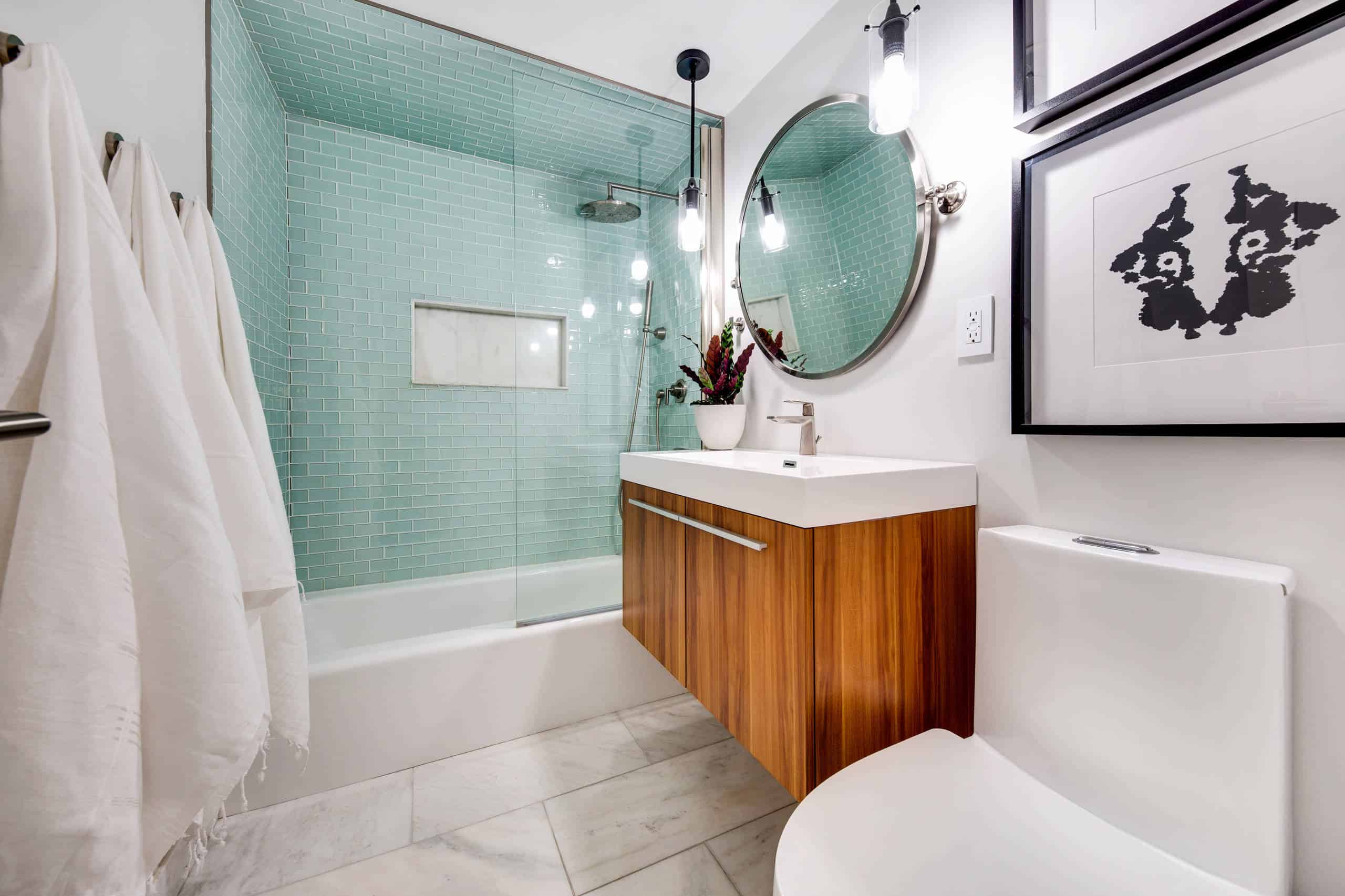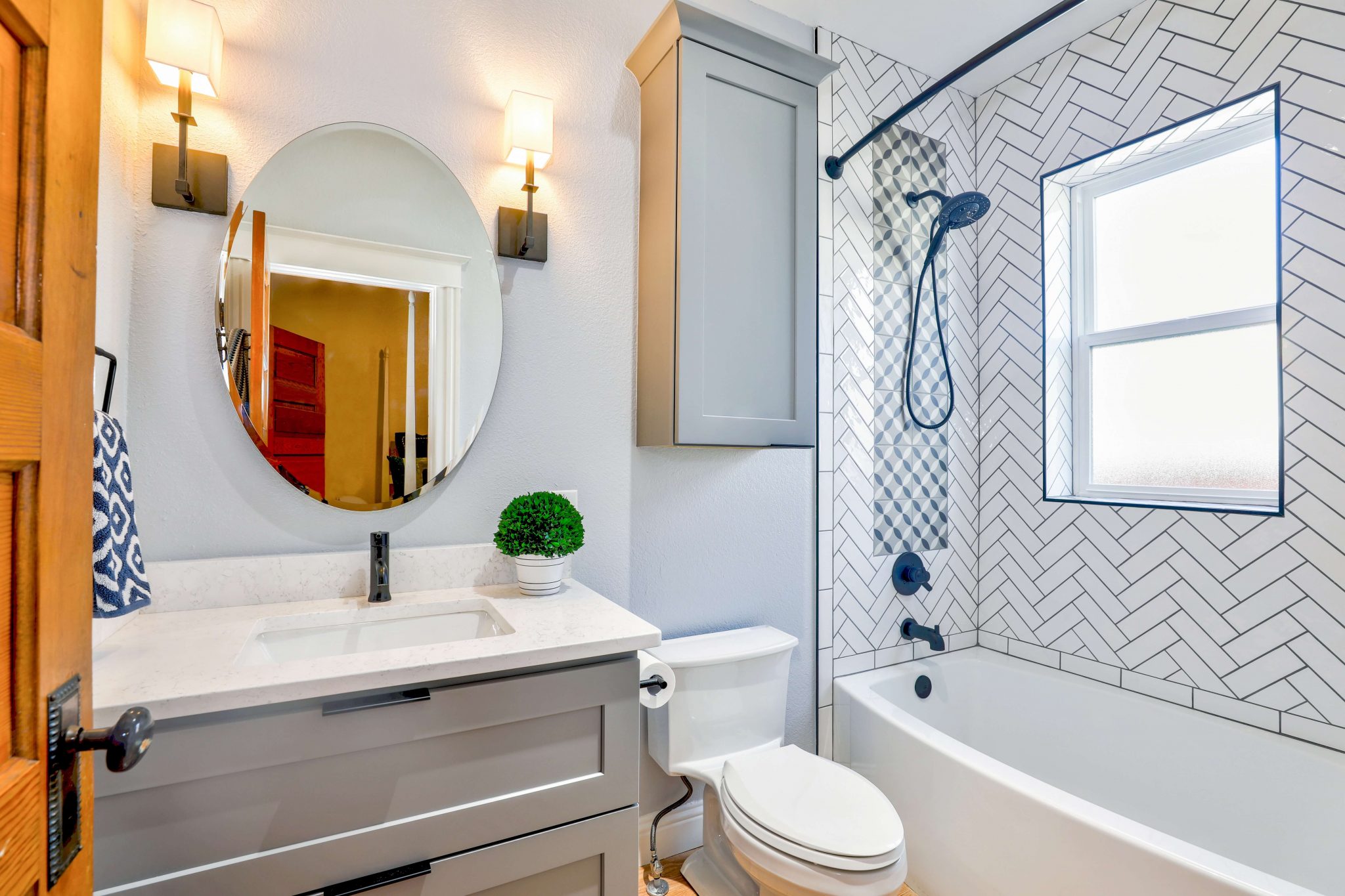Space-Saving Tub Designs

Choosing the right tub for a small bathroom is crucial for maximizing space and creating a comfortable and functional environment. Different tub shapes offer unique advantages and disadvantages, impacting both functionality and aesthetics. This section explores the most popular space-saving tub designs, their dimensions, and tips for incorporating them effectively in small bathrooms.
Corner Tubs
Corner tubs are designed to fit snugly into the corner of a bathroom, maximizing floor space. This design is particularly advantageous in small bathrooms where space is limited. Corner tubs are typically available in various sizes and styles, offering flexibility in design and functionality.
- Advantages: Corner tubs provide a comfortable bathing experience while minimizing space occupation. They create a distinct visual focal point in the bathroom, adding a touch of elegance and sophistication.
- Disadvantages: Corner tubs can be challenging to install, requiring precise measurements and careful placement. The limited access to the tub’s interior may pose difficulties for individuals with mobility issues.
Alcove Tubs
Alcove tubs are a classic choice for small bathrooms. They are typically installed within a recessed area, creating a sense of enclosure and privacy. This design offers a balance between space-saving and functionality, making it a popular choice for smaller bathrooms.
- Advantages: Alcove tubs are relatively easy to install and maintain. They are readily available in various sizes and styles, accommodating different bathroom layouts.
- Disadvantages: Alcove tubs may require a dedicated space in the bathroom, which can be a constraint in very small bathrooms. Their enclosed design can sometimes make them feel cramped.
Freestanding Tubs
Freestanding tubs offer a modern and luxurious aesthetic, adding a touch of sophistication to any bathroom. These tubs are typically placed in the center of the room, creating a focal point and enhancing the overall design. While freestanding tubs are often associated with spacious bathrooms, some models are designed for smaller spaces.
- Advantages: Freestanding tubs provide a unique and elegant design element, making a statement in the bathroom. They offer flexibility in placement and can be positioned to create a sense of openness.
- Disadvantages: Freestanding tubs require more floor space than other designs, making them less suitable for very small bathrooms. They may also require additional plumbing and installation work.
Small Tub Dimensions
When choosing a tub for a small bathroom, it is essential to consider the available space and the desired features. Popular small tub models typically range in length from 48 to 60 inches and in width from 28 to 32 inches. For example, the American Standard Cadet Alcove Tub measures 60 inches in length, 30 inches in width, and 19 inches in depth, making it a suitable choice for smaller bathrooms. Another option is the Kohler Underscore Freestanding Tub, which measures 59 inches in length, 32 inches in width, and 19 inches in depth, offering a modern and elegant design for smaller spaces.
Maximizing Space Utilization, Best tubs for small bathrooms
Incorporating a tub strategically in a small bathroom can enhance both functionality and aesthetics. Here are some tips for maximizing space utilization:
- Choose a compact tub design: Opt for a corner tub, alcove tub, or a small freestanding tub that fits the available space.
- Utilize vertical space: Install shelves, cabinets, or mirrors above the tub to maximize storage and create a sense of openness.
- Embrace multi-functional furniture: Consider using a storage bench or a vanity with built-in storage to optimize space and enhance functionality.
Small Bathroom Tub Installation Considerations: Best Tubs For Small Bathrooms

Installing a small bathroom tub can be a challenging but rewarding project. Proper planning and execution are crucial for a successful installation that meets your needs and enhances the functionality of your small bathroom. This section will guide you through the essential steps, considerations, and tools required for a seamless installation process.
Plumbing and Electrical Considerations
Plumbing and electrical considerations are paramount in tub installation. These aspects directly impact the functionality and safety of your bathroom. It’s essential to plan and execute them meticulously to ensure a smooth and efficient installation.
- Water Supply and Drainage: The existing plumbing system needs to be assessed to determine if it can handle the additional water flow and drainage requirements of the new tub. If the current system is inadequate, it may require modifications or upgrades to accommodate the new fixture.
- Water Heater Capacity: Ensure your water heater has sufficient capacity to provide hot water for the tub. A larger tub may require a more powerful water heater to maintain a consistent hot water supply during use.
- Drain Size and Type: The drain size should be compatible with the tub’s drainage capacity to prevent clogging and ensure efficient water removal. Consider the type of drain, such as a pop-up drain, which is common in modern tubs, or a traditional drain with a stopper.
- Electrical Outlets: Ensure there are enough electrical outlets in the bathroom for the tub’s accessories, such as a light fixture, fan, or a heated towel rack. These outlets should be properly grounded and meet electrical safety codes.
- GFCI Protection: A Ground Fault Circuit Interrupter (GFCI) is mandatory in bathrooms to protect against electrical shocks. Ensure all outlets and electrical fixtures in the bathroom are equipped with GFCI protection.
Tools and Materials Required
Having the right tools and materials is crucial for a successful tub installation. This list provides a comprehensive overview of the essentials you’ll need:
- Tub: Choose a tub that fits the space and complements the bathroom’s design. Consider the material, shape, and size of the tub.
- Tub Surround: This can be made of various materials, such as tile, acrylic, or fiberglass, and should be compatible with the tub and bathroom’s overall style.
- Plumbing Supplies: This includes pipes, fittings, valves, and a drain assembly. The specific components will vary depending on the tub’s design and plumbing system.
- Tub Drain: Choose a drain that is compatible with the tub and plumbing system. Consider features like a pop-up drain or a traditional drain with a stopper.
- Tub Faucets: Select faucets that match the tub’s style and functionality. Consider features like temperature control, flow rate, and spout design.
- Caulking: Use a waterproof caulk to seal gaps between the tub and surround, preventing water damage and ensuring a smooth, finished look.
- Screws and Anchors: These are used to secure the tub surround and other components to the wall. Choose appropriate sizes and materials for your specific installation.
- Measuring Tape and Level: These tools are essential for accurate measurements and ensuring that the tub is installed level and plumb.
- Safety Glasses and Gloves: Protect your eyes and hands from potential hazards during the installation process.
- Saw: Use a saw to cut the tub surround to size if needed. Choose a saw that is suitable for the material of the surround.
- Drill: A drill is essential for drilling holes for screws and other fixtures.
- Screwdriver: Use a screwdriver to fasten screws and other components.
- Wrench: A wrench is necessary for tightening and loosening nuts and bolts.
- Pliers: Use pliers to grip and manipulate small parts during installation.
- Utility Knife: A utility knife is useful for cutting caulk and other materials.
Installation Cost Comparison
The cost of installing a small bathroom tub can vary significantly depending on the tub’s type, material, and the complexity of the installation. This table provides a general cost comparison of different small bathroom tub options:
| Tub Type | Estimated Installation Cost |
|---|---|
| Acrylic Tub | $500 – $1,500 |
| Fiberglass Tub | $400 – $1,200 |
| Cast Iron Tub | $1,000 – $2,500 |
| Copper Tub | $2,000 – $5,000 |
